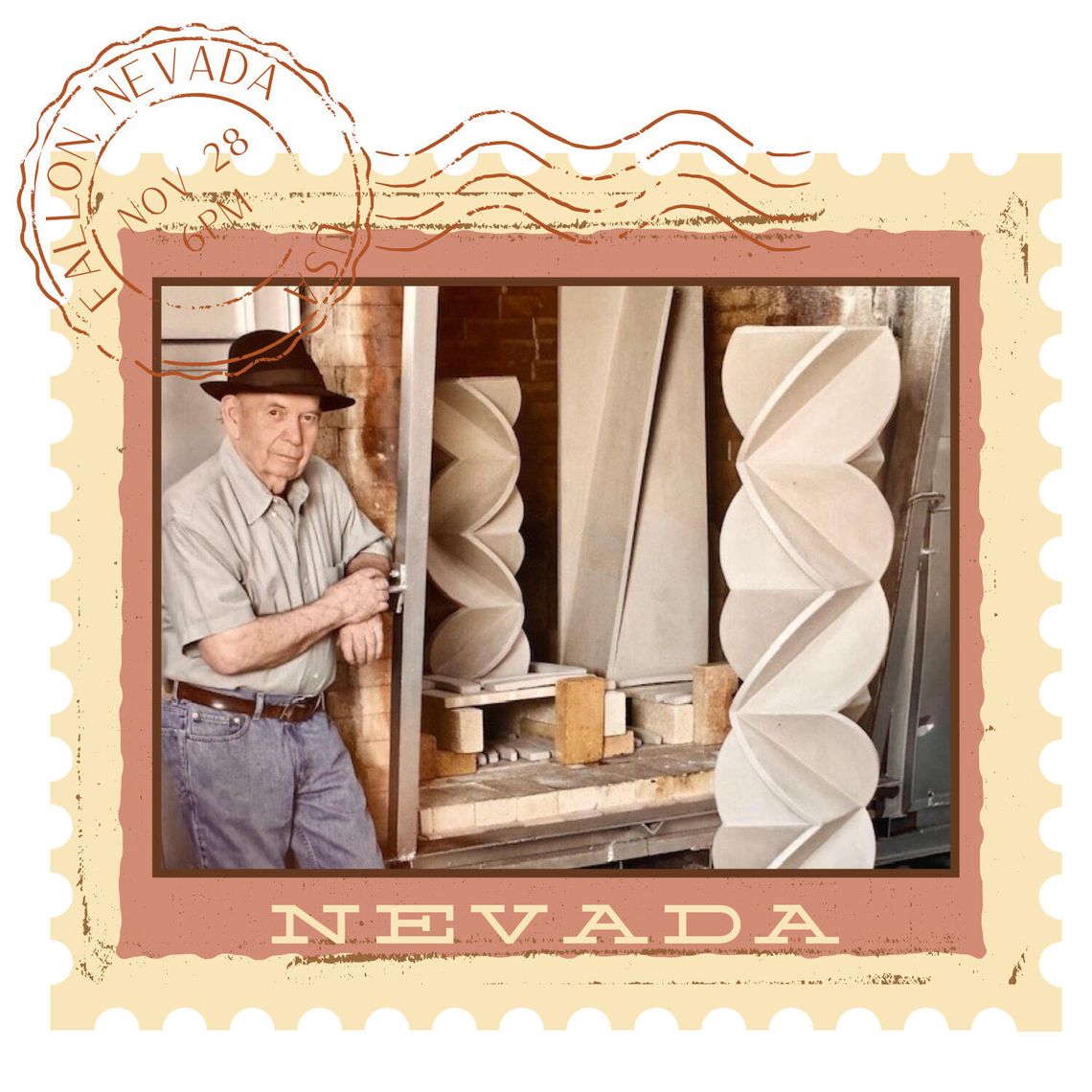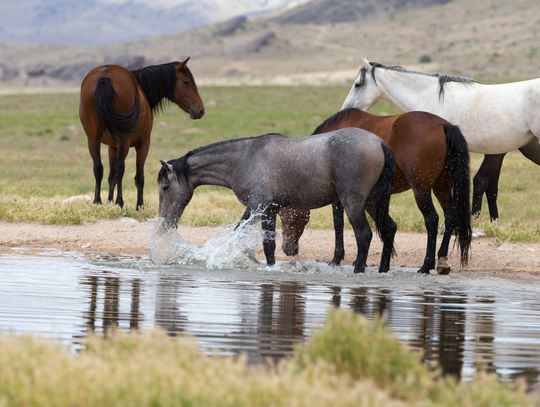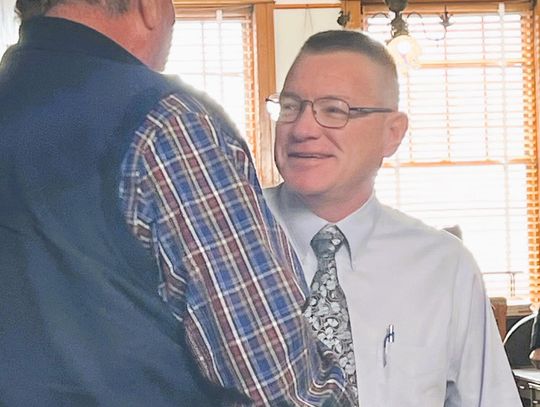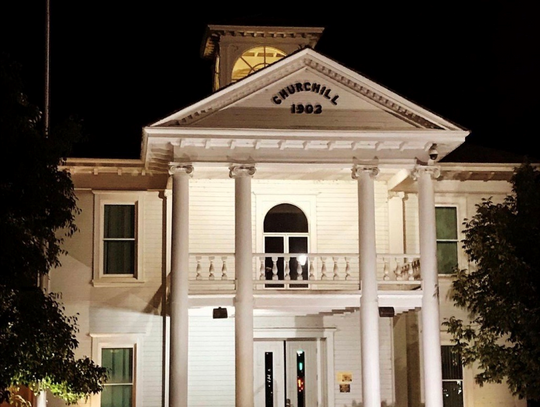On the evening of Friday, January 24, 2025, beginning at 6.p.m., the Churchill Arts Council will celebrate a remarkable event. The “Desert Cross” (sometimes called the “Fallon Cross”), a work of international importance created by ceramic artist John Mason, will be officially repatriated to its home in the Oats Park Art Center. The work was one of many works of art removed from the Center in a stealthy and puzzling operation which took place over Memorial Day weekend 2023. A lawsuit has been filed against Michael Scott, former Director of the Churchill Arts Council, seeking damages pertaining to the removal of the art works. After its removal from the Arts Center, Mason’s “Desert Cross” was given by Scott to the Lilley Museum of Art at the University of Nevada Reno. The Museum has since returned the work, with the approval of the Nevada Board of Regents, to the City of Fallon for reinstallation in the Oats Park Art Center.
The event has been carefully planned to commemorate the importance of the “Desert Cross” and its creator and to highlight the connection of artist and artwork to Fallon. Mason was raised in Hazen, Nevada, and began his serious pursuit of art at the Otis Art Institute in Los Angeles, California, eventually becoming one of the most significant and influential ceramic artists of the Twentieth Century. Joining the Arts Council to honor Mason will be John Mason’s widow, Vernita Mason; Getty Research Center Deputy Director, Andrew Perchuk; University of Nevada Reno President, Brian Sandoval; and Fallon Mayor, Ken Tedford. The public is invited.
John Mason’s niece, Andrea Getto Caldwell submitted the following essay about her uncle, John Mason:
Alva John Henry Mason was a transformative artist who changed the perception of ceramics from craft to fine art throughout the world and yet his early beginnings were based here in Churchill County. Uniquely, he spent the majority of his childhood on a dairy farm in Hazen, Nevada where he was schooled in a two-room schoolhouse. As one travels the highway to Reno from Fallon, note the Mason Road sign just west of the Hazen Store, where at the end of that lane, is the location of his upbringing. John was born in Madrid, Nebraska to AJ Henry and Florence Brown Henry. When their marriage ended early, his mother came to Hazen to join her sister in Nevada. She subsequently married Albert Mason, who adopted John, and he and his sister Barbara were then raised in the rural farming environment within the close community of Hazen. John contracted rheumatic fever in his teens which deterred his attendance of high school but upon graduation he moved to Pasadena, California to begin his pursuit of what became a lifelong devotion to art. The Otis Art Institute was the beginning of the birthing foundation of his inspirations. There he met his later collaborator, Peter Voulkos, as they both found clay to be an inspiring medium. They opened a studio in Los Angeles where a giant kiln was built to fire their large sculptures. His abstract creations gained height and breadth, once freed from the earlier confines of space and which led to an amazing time of production. The Red X and the Blue Wall were created in this studio. John had a structured approach to his creativity which involved mathematic calculations and architectural applications in his mockups prior to constructing his stunning pieces. He began to amass a following as his artwork was displayed in many world-famous museums and galleries. John, although only attaining a high school diploma at any graduate level, went on to instruct at UC Berkeley, UC Irvine, Pomona College all in California and Hunter College in New York. Although he walked amongst the world’s finest artists and was recognized as a pioneering innovator, John remained the humble and quiet man to the end of life, motivating and inspiring legions of aspiring artists by his amazing ability to deflect questions to him back to the inquirer to answer, always with a twinkle in his eye. John never forgot his early beginnings and in the mid-60s, he created and donated an astounding sculpture he deemed the Desert Cross. It was originally installed at the Churchill Public Library and then moved to the Oats Park Art Center. The Cross recently received negative attention when it was removed from the Center without authorization. After long and involved negotiations with University of Nevada, the sculpture was recently returned to its rightful home in Fallon, Nevada as John wished for it to be.
The world lost John Mason on January 20, 2019. He is survived by his widow Vernita and two adult children Jarilyn and Stuart and grandson Ibn, as well as legions of Mason-inspired artists.
If you drive by the Fallon Theater, please look up at the marquee. The “Desert Cross” is in lights. And please, send your Postcards (stories, essays, ideas, etc.) to [email protected]










































Comment
Comments